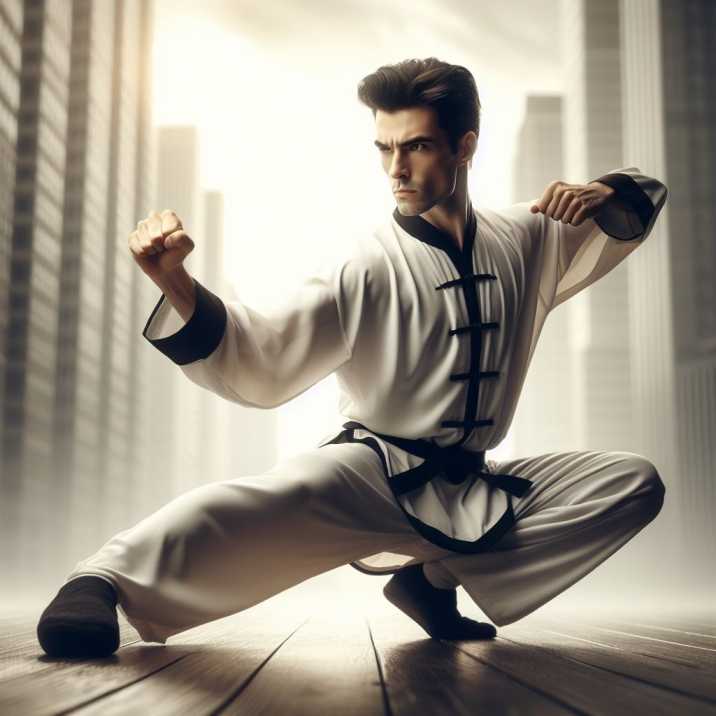In the realm of martial arts, Tai Chi and Kung Fu stand as two pillars of ancient wisdom, each with its own unique philosophy, movements, and benefits. Despite their apparent differences connection between Tai Chi and Kung Fu, these two disciplines share a deep-rooted connection that goes beyond physical techniques. Let’s delve into the intricacies of this relationship and uncover the profound insights they offer.

Connection between Tai Chi and Kung Fu
Table of Contents
Exploring the Origins
Tai Chi, also known as Tai Chi Chuan, originated in China as a martial art centuries ago. It emphasizes the concept of Yin and Yang, the balance between opposing forces, and the cultivation of internal energy, or “qi.” Kung Fu, on the other hand, encompasses a broad range of Chinese martial arts styles, developed and practiced over thousands of years. It focuses on external techniques, such as strikes, kicks, and blocks, as well as internal principles like breath control and meditation.

Shared Philosophical Roots
At their core, both Tai Chi and Kung Fu are rooted in Taoist philosophy, which emphasizes harmony with nature, self-cultivation, and the pursuit of balance and tranquility. They embody the Taoist principles of softness overcoming hardness, yielding to overcome force, and using minimal effort to achieve maximum results. This shared philosophical foundation forms the basis of their connection, guiding practitioners on a path of self-discovery and personal growth.
Complementary Practices
While Tai Chi and Kung Fu differ in their outward expression, they complement each other in practice. Tai Chi emphasizes slow, flowing movements that promote relaxation, balance, and inner peace. It enhances flexibility, coordination, and mindfulness, making it an excellent choice for stress relief and overall well-being.
Kung Fu, on the other hand, focuses on dynamic, explosive movements that develop strength, speed, and agility. It hones practical self-defense skills, improves cardiovascular health, and builds discipline and confidence. By combining the gentle, meditative aspects of Tai Chi with the dynamic, martial aspects of Kung Fu, practitioners can achieve a holistic balance of mind, body, and spirit.
The Flow of Energy
Central to both Tai Chi and Kung Fu is the concept of energy flow, or “qi” in Chinese philosophy. In Tai Chi, practitioners learn to cultivate and harness their internal energy through slow, deliberate movements and mindful breathing. This enhances the flow of qi throughout the body, promoting health, vitality, and longevity.
In Kung Fu, energy flow is expressed through powerful strikes, kicks, and blocks that channel external force and redirect it with precision and efficiency. Through rigorous training and practice, practitioners learn to harmonize their internal energy with external movements, achieving a state of fluidity and grace in combat.
The Evolution of Tai Chi Kung Fu
Over time, the practice of Tai Chi and Kung Fu has evolved and diversified, giving rise to various styles and interpretations. Some schools focus more on the martial aspects of Tai Chi, emphasizing practical self-defense techniques and combat applications. Others emphasize the meditative and health-promoting aspects, with less emphasis on combat training.
Similarly, within the realm of Kung Fu, there are countless styles and lineages, each with its own unique techniques, forms, and philosophies. Some styles prioritize acrobatic movements and elaborate forms, while others focus on practical self-defense skills and conditioning exercises. Despite these variations, the underlying principles of balance, harmony, and energy flow remain constant, connecting Tai Chi and Kung Fu in their essence.
Information-Based Table
| Aspect | Tai Chi | Kung Fu |
|---|---|---|
| Origin | Ancient China | Ancient China |
| Philosophy | Taoist principles | Taoist principles |
| Focus | Internal energy, relaxation | External techniques, self-defense |
| Movements | Slow, flowing | Dynamic, explosive |
| Benefits | Stress relief, balance | Strength, agility, discipline |
| Training | Gentle, meditative | Rigorous, disciplined |
| Styles | Various (Chen, Yang, Wu, etc.) | Various (Shaolin, Wing Chun, etc.) |
| Health Benefits | Improved flexibility, wellness | Cardiovascular fitness, strength |
| Martial Applications | Defensive techniques | Offensive and defensive techniques |
Conclusion
In conclusion, the connection between Tai Chi and Kung Fu runs deep, rooted in shared philosophical principles, complementary practices, and a mutual respect for the flow of energy. While they may appear distinct on the surface, they are two branches of the same ancient tree, offering practitioners a comprehensive path to self-discovery, health, and martial mastery.
FAQs (Frequently Asked Questions)
1. Are Tai Chi and Kung Fu suitable for beginners?
- Yes, both Tai Chi and Kung Fu offer beginner-friendly classes and programs tailored to newcomers. It’s essential to find a reputable instructor or school that aligns with your goals and interests.
2. Can Tai Chi help with stress relief and relaxation?
- Absolutely! Tai Chi’s slow, flowing movements, combined with deep breathing and mindfulness, are excellent for reducing stress, promoting relaxation, and improving overall well-being.
3. Is Kung Fu only about combat and self-defense?
- While Kung Fu does include practical self-defense techniques, it offers much more than just combat skills. Kung Fu training also focuses on physical fitness, mental discipline, character development, and spiritual growth.
4. How long does it take to master Tai Chi or Kung Fu?
- Mastery of Tai Chi or Kung Fu is a lifelong journey that varies for each individual. With consistent practice and dedication, students can see significant progress within a few months to a year, but true mastery requires years of dedicated training.
5. Can Tai Chi and Kung Fu be practiced by people of all ages?
- Yes, both Tai Chi and Kung Fu are suitable for people of all ages and fitness levels. They offer gentle, low-impact exercises that can be adapted to individual needs and abilities, making them accessible to everyone.


